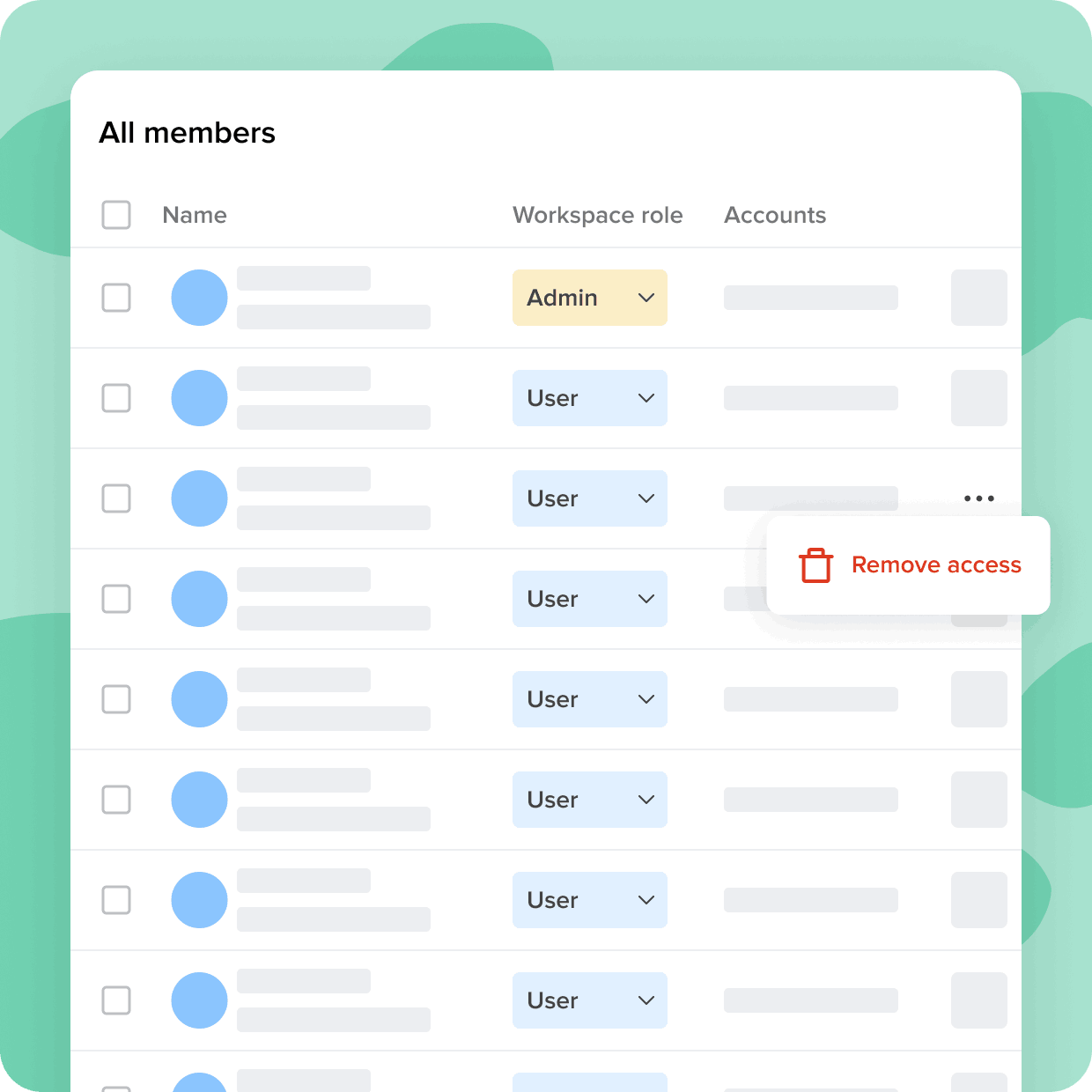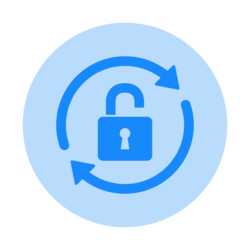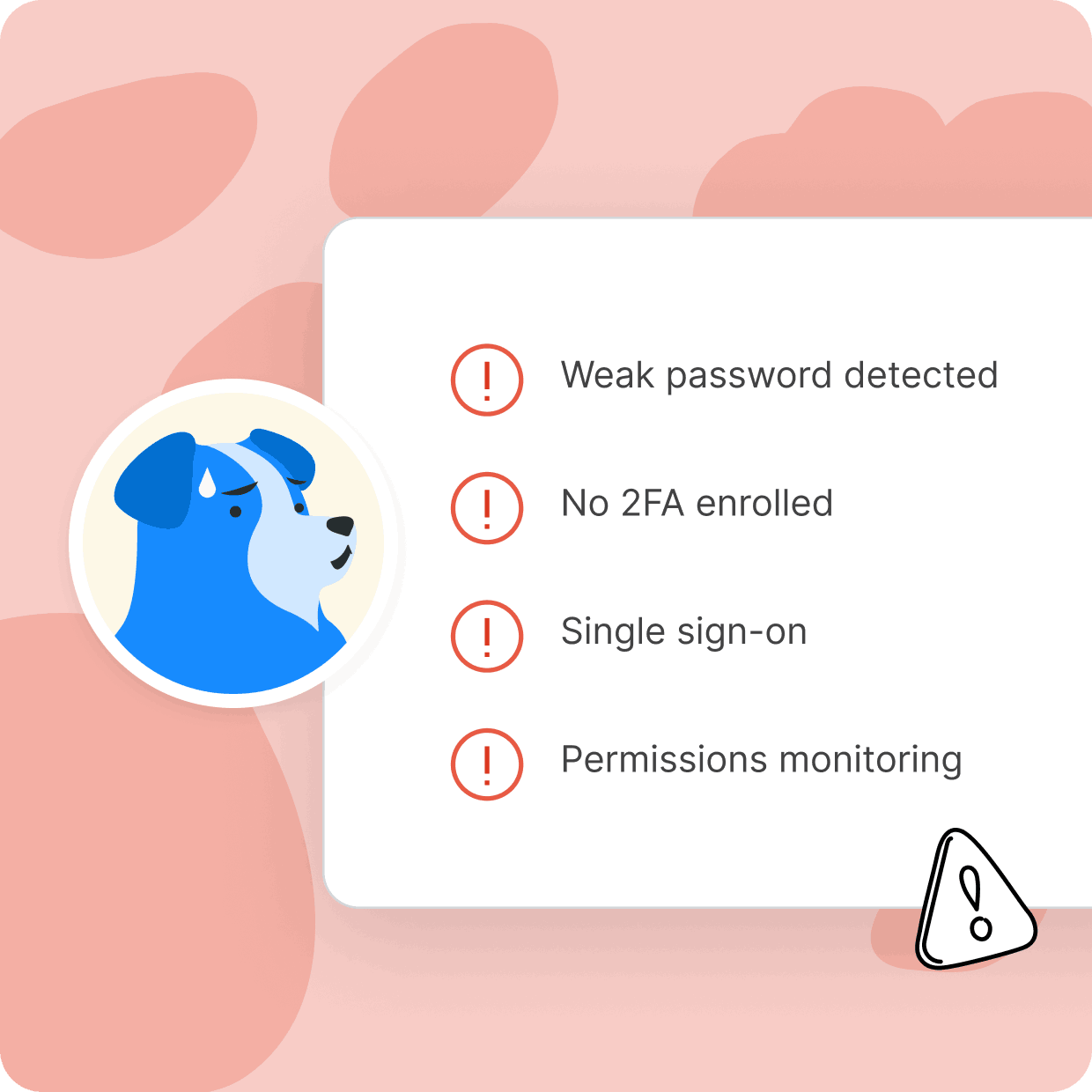Automated provisioning for ModMed
As organizations strive to optimize user management and enhance security in the modern digital era, ModMed SCIM (System for Cross-domain Identity Management) emerges as a powerful solution, empowering businesses to streamline user provisioning, authentication, and authorization processes effectively.
Regrettably, most business applications are incompatible with the SCIM specification, which automates user onboarding and offboarding from applications. These "nonfederated" applications, in the cloud and on-premises, are a growing area of risk for businesses.

The good news is that Cerby seamlessly integrates all your applications with your identity provider, regardless of whether they align with the SCIM specification.
In this informative guide, we'll delve into the specifics of ModMed software, explore its historical evolution, and illuminate its advantages.
Automate onboarding and offboarding to any app
Not all apps are created equal. Some come with security gaps and complexities that can hinder user adoption and put sensitive data at risk. With Cerby, you can ensure secure and seamless access to all your applications, regardless of their support for specifications like SCIM.
With Cerby you can

Automate offboarding
Cerby's RPA technology automates offboarding from non-SCIM supporting applications, ensuring that access is revoked promptly and accurately, reducing the risk of unauthorized access to sensitive information.

Centralize management
Cerby provides a bridge between your identity provider and applications that don't support SCIM, giving you a centralized dashboard to manage offboarding across all applications, eliminating the need for manual processes and reducing the risk of errors.
Offboard with confidence
Cerby's audit trail provides detailed information on offboarding activities, including the time and date of each action, providing an additional layer of security and compliance for organizations.
Offboard like a boss with Cerby
Automated provisioning for ModMed
In the ever-evolving landscape of healthcare technology, efficient and secure user access management is of paramount importance. Properly provisioning and deprovisioning user accounts in healthcare systems can significantly impact many elements, including:
- Data security
- Compliance
- Overall operational efficiency
ModMed (short for Modernizing Medicine) is a prominent healthcare technology company that offers a suite of innovative solutions to meet these needs. Their technology includes the ModMed EHR (electronic health records) system and other integrated health solutions and applications. These applications serve a variety of needs, including helping:
- Streamline clinical workflows
- Enhance patient care
- Facilitate efficient data management
- Practice management
- Revenue cycle management
- Payment processing, analytics
- Patient engagement tools
What is provisioning?
Provisioning refers to granting users access to ModMed applications and services. This process involves creating user accounts with specific roles and permissions, ensuring that individuals have the appropriate level of access required for their job responsibilities. The ModMed login provider is responsible for a variety of tasks (like managing user credentials and authentication). It also allows authorized personnel to securely log in to the various ModMed applications.
What is deprovisioning?
Deprovisioning, on the other hand, is the process of revoking user access to ModMed systems. When an employee leaves the organization or changes roles, it is crucial to promptly disable their user account to prevent unauthorized access to sensitive data. Deprovisioning involves several steps, like:
- Deactivating accounts
- Removing user privileges
- Archiving records
- Transferring necessary data
Why is ModMed provisioning and deprovisioning important?
Having a comprehensive provisioning and deprovisioning policy is critical. First and foremost, it helps maintain data security and compliance with industry regulations such as HIPAA (Health Insurance Portability and Accountability Act). By ensuring that only authorized personnel have access to patient information, healthcare organizations can safeguard sensitive data and protect patient privacy. A well-defined policy promotes operational efficiency by streamlining user access management processes, thus reducing the risk of errors or delays in granting or revoking access.
The process of setting up provisioning and deprovisioning involves several key steps. These typically include:
- Defining user roles and permissions
- Setting up or establishing networks
- Implementing strong authentication measures
- Managing digital identities
By following a systematic approach, healthcare organizations can effectively manage user access and maintain a robust overall information security posture.
ModMed user access management
ModMed user access management is critical for maintaining privacy and security within healthcare organizations that use ModMed solutions. The effective implementation of provisioning and deprovisioning processes ensures that only authorized individuals have access to ModMed applications and services, which is key to maintaining good cybersecurity practices.
ModMed provisioning and deprovisioning play a crucial role in helping protect sensitive patient data and maintain privacy. By doing tasks like assigning user roles and permissions, healthcare organizations can ensure that individuals have access only to the information necessary for their job responsibilities. This “principle of least privilege” minimizes the risk of unauthorized access or accidental exposure of confidential patient information. ModMed providers are typically responsible for managing and overseeing user access to maintain these privacy measures.
Effective user access management is a fundamental aspect of risk management in the context of cybersecurity. Unauthorized access to patient data can lead to breaches, identity theft, and compromised privacy. By implementing robust provisioning and deprovisioning procedures, healthcare organizations can mitigate these risks and safeguard their systems and data from cyber threats. Regularly reviewing access privileges and promptly revoking access when an employee leaves or changes roles are crucial to maintaining a secure environment.
A key component of ModMed user access management is the ModMed Practice Sandbox, which provides a controlled environment for testing and development purposes. This separate login ensures that updates and experiments do not impact the live production environment, minimizing the risk of disruptions or unauthorized access to patient data.
The ModMed EMA provider login is another critical aspect of user access management. It allows healthcare providers to securely log in to the ModMed EMA, enabling them to easily complete a number of key tasks like:
- Access patient records
- Make clinical decisions
- Document patient encounters
Strong authentication measures, such as multi-factor authentication, are often implemented to enhance the security of these provider logins.
Authentication and provisioning
Authentication and provisioning are integral to user access management in the ModMed ecosystem.
What is authentication?
Authentication refers to the process of verifying the identity of users attempting to access ModMed applications and services. When users log in, they provide their ModMed login credentials, which typically include a username and password. Strong password policies and guidelines can enhance the security of these login credentials, (such as requiring complex passwords and periodic password changes).
There are many ways to improve the security of authentication in ModMed. MFA (multi-factor authentication) adds an extra layer of security by requiring users to provide additional verification, (usually a one-time password or biometric authentication). The primary purpose of MFA is to address the vulnerabilities associated with traditional username-password authentication.
While passwords can be easily compromised or stolen through various means such as phishing attacks, brute-force attempts, or password reuse, MFA significantly reduces the likelihood of unauthorized access. Even if an attacker manages to obtain or guess the user's password, they would still need the additional factor to successfully authenticate and gain access to the account.
What is the difference between provisioning and authentication?
Provisioning, on the other hand, involves granting users access to ModMed systems based on their roles and responsibilities within the organization. User provisioning ensures that individuals have the necessary permissions to perform their job functions effectively.
To streamline the process and ensure consistency, businesses should create a user access provisioning policy that outlines the steps and requirements for granting and modifying user access. This policy should include guidelines for things like:
- Creating user accounts
- Assigning roles and permissions
- Specifying the necessary approvals and documentation
Automated authentication and provisioning
Automation plays a vital role in authentication and provisioning processes. Implementing automated workflows and tools can significantly improve efficiency and reduce human errors. In addition, they can also significantly enhance security. For example, businesses can leverage identity and access management (IAM) solutions to automate the provisioning and deprovisioning of user accounts based on predefined rules and workflows. This automation can include:
- Account creation
- Role assignment
- Access permissions
- And more
Automated authentication and provisioning can ensure that users always have the appropriate level of access from the moment they join the organization.
Businesses can also leverage automation for managing user access throughout the employee lifecycle. This includes automating onboarding processes to provision user accounts promptly and efficiently, as well as automating offboarding processes to ensure timely deprovisioning when employees leave the organization or change roles
Besides authentication and provisioning, businesses should provide comprehensive training and support to users. ModMed communities and ModMed training resources can educate users on the best practices for safeguarding their ModMed access credentials.
Automatic suspension and deprovisioning
Automatic suspension and deprovisioning are critical processes that help ensure data security and compliance. Automatic suspension is a feature that temporarily disables user access to patient-facing applications and services under specific circumstances. This can occur when suspicious activity is detected, or when predefined conditions are met, such as repeated failed login attempts or inactivity for an extended period. Utilizing automatic suspension can help businesses proactively mitigate potential security risks and prevent unauthorized access to sensitive data.
User deprovisioning, on the other hand, refers to the process of revoking user access to ModMed systems when individuals leave the organization or change roles. Deprovisioning controls ensure that accounts are promptly deactivated and access privileges are revoked to prevent unauthorized access. It is crucial to establish a well-defined deprovisioning process that includes steps for everything, including:
- Disabling accounts
- Removing user privileges
- Archiving files
- Transferring necessary data to maintain data integrity and security
Businesses should create policies around automatic suspension and deprovisioning to ensure consistent and compliant user access management. These policies should outline the conditions and triggers for automatic suspension, the steps involved in the deprovisioning process, and the responsibilities of different stakeholders in the organization. The policies must also address data retention and backup procedures to ensure critical information is properly managed during deprovisioning.
Automation is key to effectively implementing automatic suspension and deprovisioning. By leveraging identity and access management (IAM) solutions, businesses can automate these processes based on predefined rules and workflows. This automation streamlines the monitoring and detection of suspicious activity, enabling the timely automatic suspension of user accounts. Similarly, automation tools can facilitate the deprovisioning process by doing things like automatically disabling accounts and removing user access or data as per the defined policies.
ModMed Sandbox automatic suspension and deprovisioning
The ModMed Sandbox is a controlled testing environment separate from the live production environment. It is important to ensure that the automatic suspension and deprovisioning processes consider access to the sandbox appropriately. Inactive or suspended accounts in the sandbox should be included in the overall user deprovisioning process to maintain a consistent and secure environment across all ModMed instances.
By creating policies and implementing automation around these processes, businesses can enhance data security, mitigate user access risks, and ensure compliance. Automatic suspension aids in proactive security measures, while well-defined deprovisioning processes and automation tools help efficiently revoke user access when needed.


